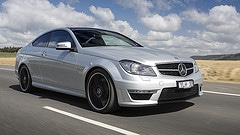 After daily practice and experience, driving becomes a habit. After several years, and even months of driving, many of the tasks that you had to think long and hard about now come naturally. This makes driving less of a challenge, but it also presents a new set of concerns. Often, the little tasks that many of us were once cautious with are now done carelessly—not completely stopping at a red when turning right, weaving in and out of lanes in an effort to pass everybody on the road, speeding, or even not wearing a seatbelt. These are just a few simple things that experienced drivers often forget to do.
After daily practice and experience, driving becomes a habit. After several years, and even months of driving, many of the tasks that you had to think long and hard about now come naturally. This makes driving less of a challenge, but it also presents a new set of concerns. Often, the little tasks that many of us were once cautious with are now done carelessly—not completely stopping at a red when turning right, weaving in and out of lanes in an effort to pass everybody on the road, speeding, or even not wearing a seatbelt. These are just a few simple things that experienced drivers often forget to do.
Neglecting those important tasks isn’t always a conscious decision. Generally, no one actively wants to be an unsafe driver, so it’s important to go over the basics again—relearning the basics will ensure that you will be a safer driver. As wintertime in Utah steadily approaches, reviewing the basic tasks of driving is essential to your safety. Unfortunately, there is not one way to completely prevent car crashes. You cannot control how other people act on the road. However, you can control how you drive. When you become a better driver, it can make the roads safer.
In Utah, the top five leading causes of death on the roads are listed in the Driver’s Handbook. The circumstances surrounding these deaths and crashes are tragic and heartbreaking, but by looking closer at the statistics, we can learn from them. The statistics show us what circumstances we can change in our own car or driving habits in order to prevent car accidents.
Table of Contents
THE TOP FIVE LEADING CAUSES OF DEATH ON UTAH ROADS
- Speeding (42%) — If your speed is past the legal limit, it is not only incredibly dangerous, but also an incredibly common cause of death, as the percentage above demonstrates. Driving too fast, no matter what the weather is, is incredibly risky to other people on the road, and it also puts you in harm’s way. There is no appointment, meeting, or event that is worth your safety or the safety of others.
The 2014 Utah Driver Handbook offers some important and useful insight on speed limits:
- When passing a school building or grounds during their recess or while children are going to or leaving school, your speed needs to be 20 miles per hour.
- In any business or residential area, your speed needs to be 25 miles per hour.
- On major highways—check the posted speed limit signs—your speed should be around 55 miles per hour.
- 65/75/80 miles per hour are reserved for freeways and rural interstate highways. Remember to always check the posted speed limit. Driving the wrong speed limit is dangerous and it could land you a ticket. The speed limits vary, so be attentive. As a good reminder, the handbook says, “’I thought this was a 75 mph zone’ is not a valid response if you are pulled over.” Keep that in mind as you drive.”
- There are other times that the law requires to you to slow down. A few of those times include:
- When approaching and crossing an intersection or railroad crossing.
- When approaching the top of a hill
- In any highway work zones where construction, maintenance, or utility work is being done.
Keep in mind that you do not want to drive so slowly that you become a hazard to other drivers on the road. Make sure you drive the speed limit when conditions allow.
- Failed to Keep in Proper Lane (39%)
This seems like a very simple concept—stay in your lane, right?—but there is a lot of little tips and guidelines the handbook offers as far as understanding lanes that need relearning for many experienced drivers. As it explains on page 12, “As our Utah road system becomes more complex, the proper use of lanes becomes increasingly important. You should be aware of the laws concerning turns, lane changes, overtaking, and passing.” Below are just a few of the rules and guidelines the handbook offers concerning the proper usage of lanes. Refer to the handbook for pictures, as well as a more in depth version of these bullet points.
Turns:
Making a safe turn means planning ahead, signaling ahead of time, and getting into the turning lane when you are at least 100 feet before your turn.
- Making a safe left hand turn:
- Use your signal to indicate you are changing lanes before you get into the left lane.
- Safely move into the left lane.
- Slow down and turn your left hand signal on.
- Check both your left and right sides before turning left. Make sure the coast is clear, and then you can turn.
- Do not cut corners or swing wide. Stay in your lane when you’re turning.
- You need a green light to turn left, unless otherwise noted.
- Making a safe right hand turn:
- Use your signal to indicate you are changing lanes, and then move into the right lane.
- Safely move into the right lane.
- Slow down and turn your right hand signal on.
- Check both your left and right sides before turning right. You can turn right on a red light unless otherwise noted. (That is why it is crucial to check all sides before you turn—other cars and pedestrians may be going.)
Changing Lanes:
The handbook states, “Many drivers feel that using only their mirrors to check for other traffic is adequate for changing lanes. The illustration below shows some ‘blind spots’ which cannot be seen when using your mirrors. Drivers who fail to check these areas by looking over their shoulders cause many crashes.”
The handbook offers guidance and suggests that you follow these rules:
- Glance in your rearview mirrors.
- Look over your shoulder in the direction you want to move.
- Check quickly
- Drive defensively by making sure that your lane change will not harm you or any other drivers.
- Maintain your speed while changing lanes.
- Avoid driving in negligent drivers’ blind spots.
- Pass cars only in a passing zone.
- Do not pass when another car is approaching, on hills, when school bus lights are flashing, and when another car stops at the crosswalk.
- Unrestrained Occupants (36%) — Wearing a seatbelt is of the utmost importance. Your seatbelt keeps you in place during a crash and it save lives. Besides that very important fact, wearing your seatbelt is the law. According to the Click it or Ticket Utah website, the primary concern is for passengers or drivers under 19 years old. The driver is responsible for any unrestrained passengers under the age of 16. Before you drive off, make sure you buckle your seatbelt and that everyone else in the car buckles their seatbelt, too. Drivers older than 16 will be cited $45 (unless they choose to attend a Defensive Driving Class, in which the citation will be lowered to $30).
- Failed to Yield Right of Way (12%) — When we feel rushed or late, there is a tendency to rush and quickly make the turn. If there is so much as the smallest chance that you might not make the turn, don’t do it and just wait. It is worth it in the long run to wait a few seconds to turn while yielding, rather than get into an accident.
5. Distracted and Drunk Driving (9%) — Be alert and don’t be distracted! The Utah Driver Handbook explains important safety guidelines to follow when driving:
- Plan: If you are driving somewhere new, try to familiarize yourself with the roads on a map. While you are driving, whether it is somewhere new or not, plan ahead of time what action you are going to take. If you are going to turn right, don’t suddenly move into the right turning lane and cut someone off. Put your blinker on, and make sure other people know that you are going to be turning. If you are too busy being distracted with something else, you will be exponentially more prone to make a mistake and get into a car crash.
- Don’t drive drowsy: If you have taken any kind of sleep aid within the last couple hours, do not drive. Sometimes you will feel okay, but driving requires very intense concentration—concentration you won’t have if you are starting to doze off. Before you drive, make sure you get a lot of rest so you can be alert and awake. However, if you do all of those things and you still feel tired during your drive, pull over. It’s worth making your trip just a little bit longer to avoid a potential accident.
- Never drink and drive: Even if you feel sober, you should never drink and drive. Never get in a car with someone who has been drinking, no matter if they seem fine. Have a designated driver pick you up, or call a taxi.
All the tips in this article are from the 2014 Utah Driver Handbook.
Image courtesy of Pexels

